Danger Dust
 theconversation.com
theconversation.com
Today the perilous state of the environment is often in the news. Many stories describe how Earth is being damaged by human beings and discuss ways to prevent this. These concerns are not new. Millennia ago, people in ancient Greece and Rome already knew humans were damaging the natural world. Literature from these ancient times contains many references to the environment and the harms it suffers. Many of these insights ring true today. Polluting the soil we farm, air we breathe and water we drink has clear repercussions. We can only degrade the environment for so long before it will come back to haunt us.
 www.theguardian.com
www.theguardian.com
Research at the Francis Crick Institute could lead to new drugs to counter progress of diseases like Alzheimer’s British scientists are about to launch a remarkable research project that will demonstrate how the air we breathe can affect our brains. This work will be vital, they say, in understanding a major medical problem: how atmospheric pollution can trigger dementia. In recent years, scientists have discovered that air pollution is one of the most pernicious threats to human health and have shown it is involved in causing cancer, heart disease, diabetes, low birthrates, and many health conditions.
 medicalxpress.com
medicalxpress.com
While peanut allergens can be detected at very low levels in the air when shelling nuts, the dust settles quickly and can only be detected in very close proximity to the nuts, implying that very little dust circulates in the air. What's more, aircraft cabin ventilation systems are designed to circulate air across the aircraft, rather than along the cabin, so minimizing the potential for spreading passenger-generated contaminants through the cabin, explain the authors. Air is completely exchanged every three to four minutes during a flight. This compares with every 10 minutes for hospitals and classrooms. In modern large commercial aircraft, around half of the air intake is recirculated air that has passed through particulate air filters which effectively remove dust, vapors, microbes, and capture aerosolized food particles at the same time. The other half comes from outside.
Per- and polyfluoroalkyl substances (PFAS) are widely used in consumer and industrial products but have subsequently raised concerns about their toxicity. To evaluate factors influencing PFAS concentrations in drinking water and to estimate human exposure, ten PFAS were measured in tap water from the UK and China, also bottled water originating from 15 different countries. In this study, perfluorooctanoic acid and perfluorooctanesulfonate (PFOS) were the most frequently detected (>99%) and dominated in global bottled water, with other PFAS also highly detected (67%–93%). ∑10PFAS concentrations differed significantly in natural mineral vs purified, but not in glass vs plastic and still vs sparkling bottled water. High detection rates of target PFAS in both tap and bottled water highlight necessary for monitoring a wide range of PFAS. Estimated human exposure of target PFAS via drinking water does not appear serious human health risk. Interestingly, boiling and activated carbon filtration can reduce substantially (50%–90%) concentrations of PFAS in water.
From dumping iron into the ocean to launching mirrors into space, proposals to cool the planet through “geoengineering” tend to be controversial—and sometimes fantastical. A new idea isn’t any less far-out, but it may avoid some of the usual pitfalls of strategies to fill the atmosphere with tiny, reflective particles. In a modeling study published this month in Geophysical Research Letters, scientists report that shooting 5 million tons of diamond dust into the stratosphere each year could cool the planet by 1.6ºC—enough to stave off the worst consequences of global warming. The scheme wouldn’t be cheap, however: experts estimate it would cost nearly $200 trillion over the remainder of this century—far more than traditional proposals to use sulfur particles.
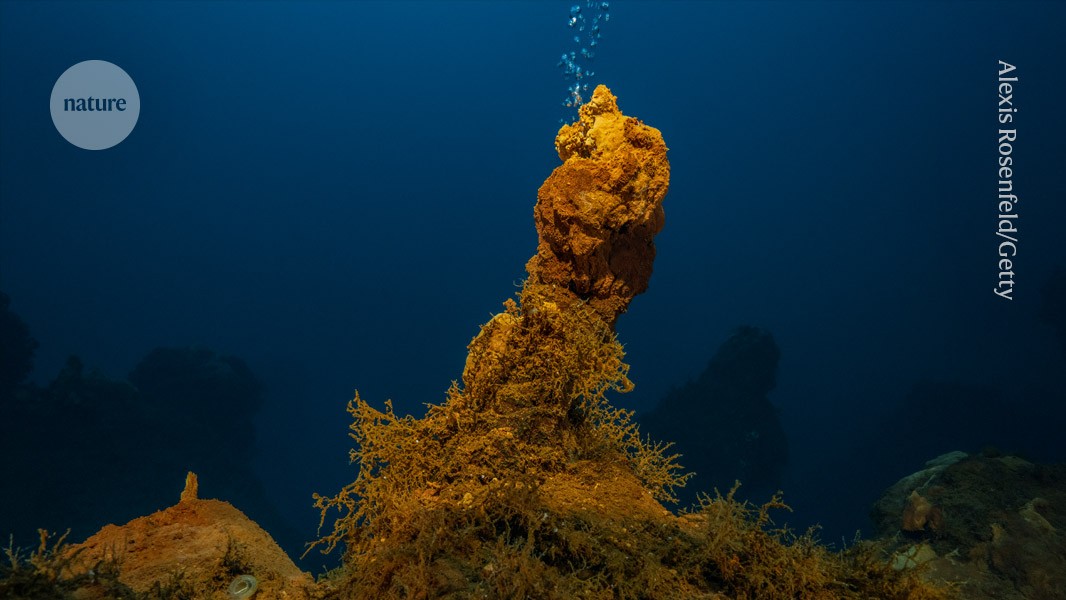 www.nature.com
www.nature.com
Researchers have used artificial intelligence (AI) to uncover 70,500 viruses previously unknown to science on many of them weird and nothing like known species. The RNA viruses were identified using metagenomics, in which scientists sample all the genomes present in the environment without having to culture individual viruses. The method shows the potential of AI to explore the ‘dark matter’ of the RNA virus universe.
 academic.oup.com
academic.oup.com
Post-mortem studies have shown that patients dying from severe acute respiratory syndrome coronavirus (SARS-CoV-2) infection frequently have pathological changes in their CNS, particularly in the brainstem. Many of these changes are proposed to result from para-infectious and/or post-infection immune responses. Clinical symptoms such as fatigue, breathlessness, and chest pain are frequently reported in post-hospitalized coronavirus disease 2019 (COVID-19) patients. We propose that these symptoms are in part due to damage to key neuromodulatory brainstem nuclei. While brainstem involvement has been demonstrated in the acute phase of the illness, the evidence of long-term brainstem change on MRI is inconclusive. We therefore used ultra-high field (7 T) quantitative susceptibility mapping (QSM) to test the hypothesis that brainstem abnormalities persist in post-COVID patients and that these are associated with persistence of key symptoms.
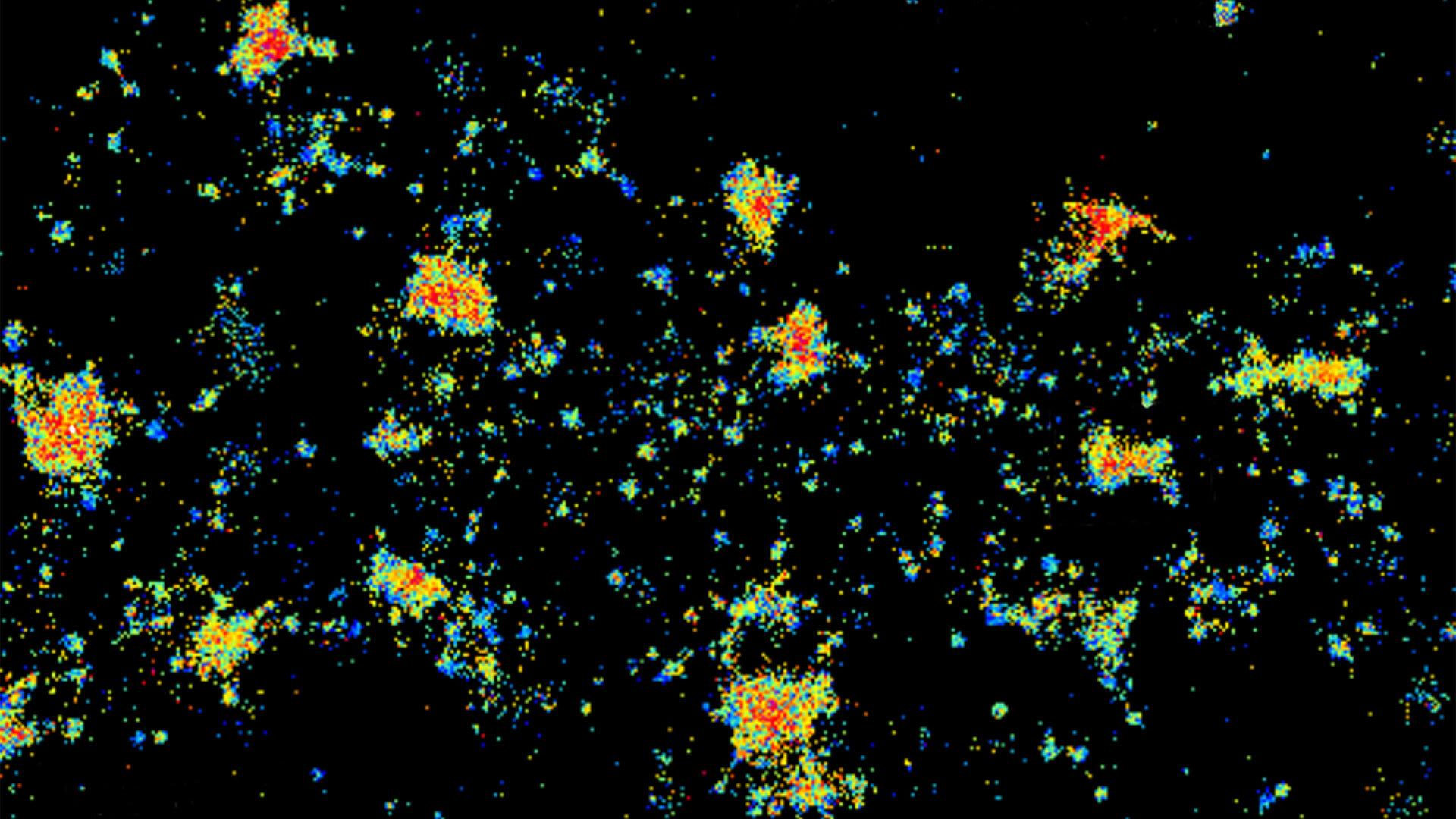 phys.org
phys.org
Imagine you wake up in a hospital without a single memory of the last month. Doctors say you had a series of violent episodes and paranoid delusions. You'd become convinced you were suffering from bipolar disorder. Then, after a special test, a neurologist diagnoses you with a rare autoimmune disease called anti-NMDAR (Anti-N-methyl-d-aspartate receptor) encephalitis. This is what happened to Susannah Cahalan, a New York Post reporter who would go on to write the best-selling memoir Brain on Fire: My Month of Madness. Anti-NMDAR encephalitis can lead to hallucinations, blackouts, and psychosis, says Cold Spring Harbor Laboratory Professor Hiro Furukawa. It mostly affects women ages 25 to 35—the same age at which schizophrenia often presents itself. But what's happening in anti-NMDAR encephalitis is something else.
Neither vaccinations nor immunity from infections seem to thwart SARS-CoV-2 for long. The frequency of new infections within a few months of a previous bout or a shot is one of COVID-19’s most vexing puzzles. Now, scientists have learned that a little-known type of immune cell in the bone marrow may play a major role in this failure. The study, which appeared last month in Nature Medicine, found that people who received repeated doses of vaccine, and in some cases also became infected with SARS-CoV-2, largely failed to make special antibody-producing cells called long-lived plasma cells (LLPCs).
Recently, the U.S. Environmental Protection Agency adopted a more stringent annual-average air quality standard for PM2.5 (9 μg/m3). Here, we demonstrate that 44% of urban areas exceeding this new standard─encompassing ∼20 million people─would remain undetected because of gaps in the current PM2.5 monitoring network. Crucially, we find that “uncaptured” hotspots, which contain 2.8 million people in census tracts that are misclassified as in attainment of the new PM2.5 standard, have substantially higher percentages of minority populations (i.e., people of color, disadvantaged communities, and low-income populations) compared with the overall U.S. population. To address these gaps, we highlight 10 priority locations that could reduce the population in the uncaptured hotspots by 67%. Overall, our findings highlight the urgent need to address gaps in the existing monitoring network.
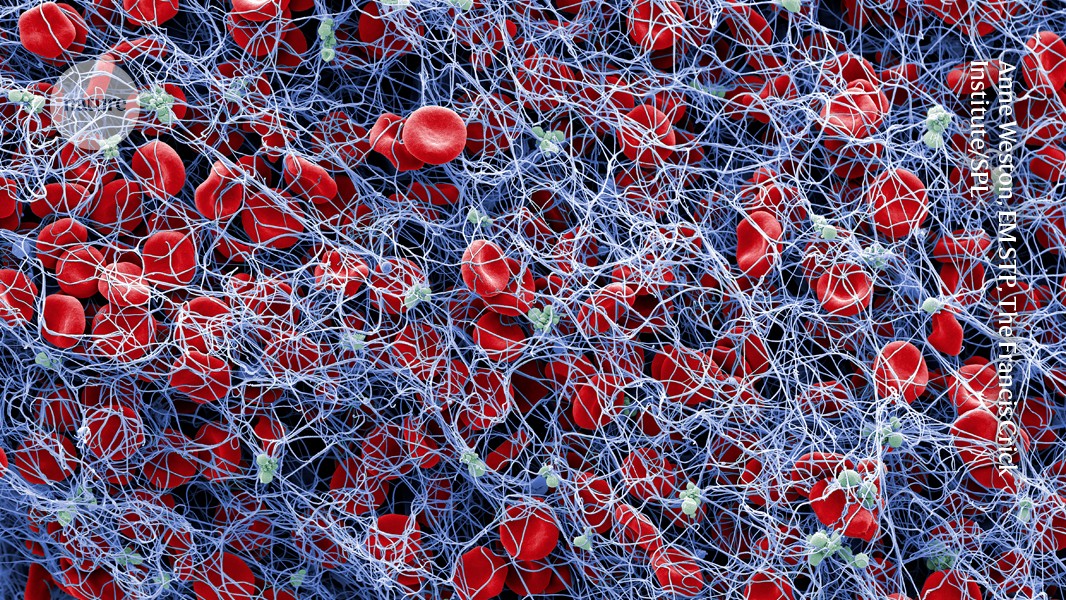 www.nature.com
www.nature.com
Forget the gauze and bandages: electrical stimulation near the ear might help to reduce bleeding. Researchers hope the technique could one day be used before surgery, childbirth and other events that pose a risk of dangerously uncontrolled bleeding. The treatment, called a ‘neural tourniquet’ by its creators, helps to turbocharge the activity of platelets, which are cell fragments that form blood clots, according to preliminary results presented at the 2024 Society for Neuroscience conference.
Recently, the U.S. Environmental Protection Agency adopted a more stringent annual-average air quality standard for PM2.5 (9 μg/m3). Here, we demonstrate that 44% of urban areas exceeding this new standard─encompassing ∼20 million people─would remain undetected because of gaps in the current PM2.5 monitoring network. Crucially, we find that “uncaptured” hotspots, which contain 2.8 million people in census tracts that are misclassified as in attainment of the new PM2.5 standard, have substantially higher percentages of minority populations (i.e., people of color, disadvantaged communities, and low-income populations) compared with the overall U.S. population. To address these gaps, we highlight 10 priority locations that could reduce the population in the uncaptured hotspots by 67%. Overall, our findings highlight the urgent need to address gaps in the existing monitoring network.
A paper published by The Lancet Infectious Diseases today offers some answers. It shows the currently circulating strain of the Oropouche virus replicates far better in cell cultures than an older strain did—suggesting it may do better in humans as well. The data also suggest the current strain is different enough from earlier ones that people infected a decade ago have almost no immunity against today’s version. “This is not a new virus,” but it seems to “replicate faster, replicate better, and be more virulent.
 www.consumernotice.org
www.consumernotice.org
Silica-Related Diseases Silica dust exposure may contribute to several serious, debilitating and life-altering health conditions. Lung cancer and silicosis are among the more severe conditions caused by silica dust. Health Conditions Related to Silica Dust Autoimmune disorders Bronchitis Cardiovascular impairment Chronic obstructive pulmonary disease Emphysema Kidney disease Lung cancer Silicosis Pulmonary silicosis is a debilitating condition that causes the formation of silicotic nodules in the lungs. These lesions tend to group in the upper lobes. They can lead to impaired lung function and eventually death. Silica dust exposure is the only cause of silicosis.
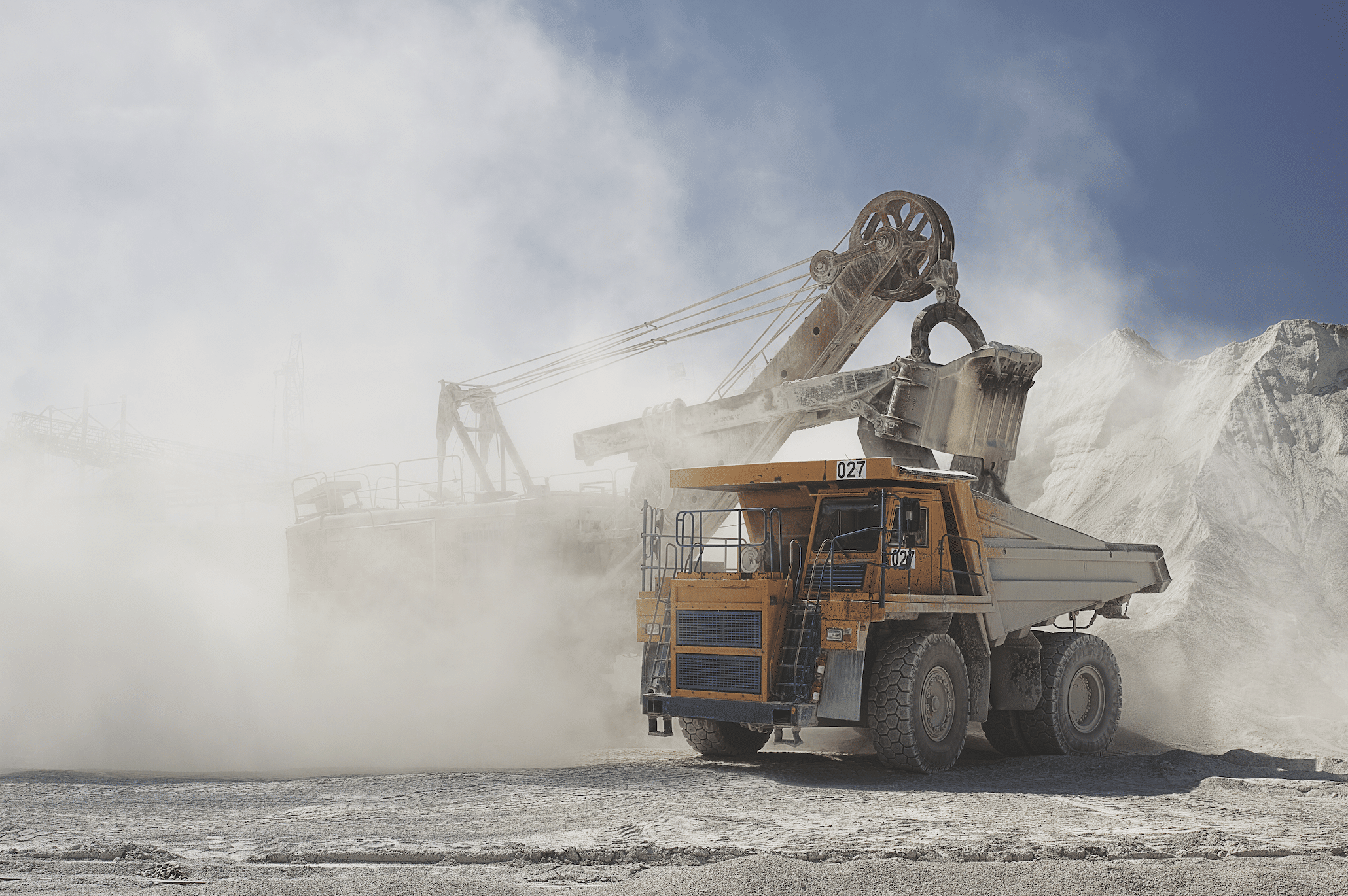 safetowork.com.au
safetowork.com.au
Safe Work Australia will soon seek feedback on the proposed workplace exposure limits (WEL) for nine chemicals. The consultation will seek feedback from stakeholders on the economic, social and health impacts of the chemicals on workers. Submissions to this consultation will be used by Safe Work Australia to prepare an impact analysis report for Work health and safety (WHS) ministers to help them decide, for each of the nine chemicals, whether or not to implement the proposed exposure limit and the timeframe for implementation. Consultation will open soon through Safe Work Australia’s Consultation Hub, where information can be found on each chemical. The chemicals soon to be under review include: 1. benzene 2. chlorine 3. copper (fumes, dusts and mists) 4. formaldehyde 5. hydrogen cyanide 6. hydrogen sulphide 7. nitrogen dioxide 8. respirable crystalline silica 9. titanium dioxide.
 www.nature.com
www.nature.com
In summary, our findings reveal that among agate-stone workers, the prevalence of latent TB infection exceeded that reported for the general population. Notably, exposure to silica dust emerged as a significant factor, especially prolonged exposure and engagement in specific work settings involving polishing and chipping of agate stones. Experts concurred with these findings and advocated for targeting agate-stone workers and other similarly silica-dust-exposed occupational groups for latent TB testing and subsequent TB preventive treatment, aiming to mitigate the burden of TB within these vulnerable populations.
Our results also provide a physically based and experimentally verifiable explanation for landslide creep. In short, the inherently rate strengthening behavior of clay-rich shear zones may explain the behavior of slow landslides developed in Franciscan mélange. This, in turn, suggests that it may be possible to predict which landslides are prone to catastrophic acceleration on the basis of paired geologic mapping and laboratory measurements of frictional properties. For example, creeping landslides revealed by synthetic aperture radar interferometry (InSAR) in the western United States are commonly associated with surface exposures of clay-rich subduction mélange. Where these rocks transition to quartz-rich turbiditic sandstones to the north, evidence for creeping landslides largely disappears, although evidence for landsliding is still ubiquitous in the topography. This potential lithologic control on the style of landslide failure is notable and raises the possibility that fundamental differences in landslide behavior—and hazard—in these two settings, and elsewhere, could be controlled by opposing frictional properties (i.e., rate strengthening versus rate weakening) in the contrasting lithologies in the two settings, a hypothesis that is eminently testable through targeted experiments of rock friction.
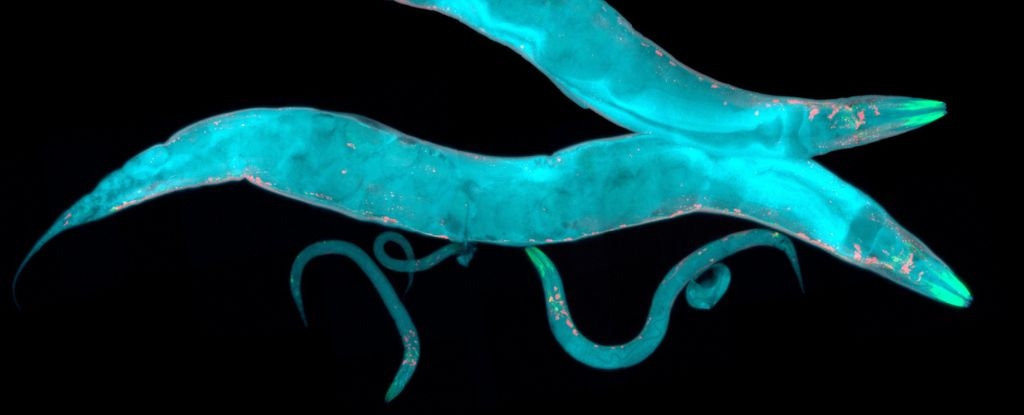 www.sciencealert.com
www.sciencealert.com
One of the most studied organisms on Earth has a nose for danger that scientists are just beginning to understand. The mere whiff of dangerous bacteria is enough to put the immune system of a roundworm on high alert. Like humans smelling 'off' food from the fridge, the olfactory neurons of the nematode, Caenorhabditis elegans, may serve as an early warning sign for bad food. Instead of stopping the worm from eating the pathogen, however, the stink of harmful bacteria prepares the worm's gut for the worst. Source: **Olfaction regulates peripheral mitophagy and mitochondrial function** [https://www.science.org/doi/10.1126/sciadv.adn0014](https://www.science.org/doi/10.1126/sciadv.adn0014)
 theconversation.com
theconversation.com
When the Paris agreement on climate change was gavelled into being in December 2015, it briefly looked like that rarest of things: a political victory for climate activists and delegates from the poorest regions of the world that, due to colonisation by today’s wealthy nations, have contributed little to the climate crisis – but stand to suffer its worst ravages. The world had finally agreed an upper limit for global warming. And in a move that stunned most experts, it had embraced the stretch target of 1.5°C, the boundary that small island states, acutely threatened by sea-level rise, had tirelessly pushed for years. Or so, at least, it seemed. For soon, the ambitious Paris agreement limit turned out to be not much of a limit at all.... De facto, what they said was this: staying below a temperature limit is the same as first crossing it and then, a few decades hence, using methods of removing carbon from the atmosphere to dial temperatures back down again. From some corners of the scientific literature came the assertion that this was nothing more than fantasy. A new study published in Nature has now confirmed this critique.
**Highlights** • Mitochondrial perturbation of the intestinal epithelium induces tissue injury • Loss of IL-10 and AhR-related host mechanisms accelerate injury and inflammation • Mitochondrial dysfunction induces dysbiosis and expansion of Bacteroides spp. • Metabolic injury gene signature discriminates inflamed versus non-inflamed IBD samples Mitochondrial dysfunction is associated with inflammatory bowel diseases (IBDs). To understand how microbial-metabolic circuits contribute to intestinal injury, we disrupt mitochondrial function in the epithelium by deleting the mitochondrial chaperone, heat shock protein 60 (Hsp60Δ/ΔIEC). This metabolic perturbation causes self-resolving tissue injury. These signatures are observed in samples from Crohn’s disease patients, distinguishing active from inactive inflammation. Thus, mitochondrial perturbation of the epithelium causes microbiota-dependent injury with discriminative inflammatory gene profiles relevant for IBD. In summary, we provide evidence that bacterial communities adjust to changes in epithelial metabolism, creating a dysbiotic adaptation of the microbiota in the intestine. What remains elusive and requires further analysis is how metabolic changes in the epithelium select the growth of distinct members of the bacterial community. Here, we demonstrate that metabolic flexibility of B. caecimuris coincides with metabolic injury, but the explicit contribution of bacterial pathways in these adverse microbial-metabolic circuits remains to be identified. MT perturbation and bacterial signals cooperate in the development of metabolic injury, and host-derived metabolic gene signatures discriminate active and inactive inflammatory processes in IBD patients. Thus, targeting specific MT pathways or microbe-host circuits may yield therapeutic options in recurrent inflammatory pathologies in the intestine.
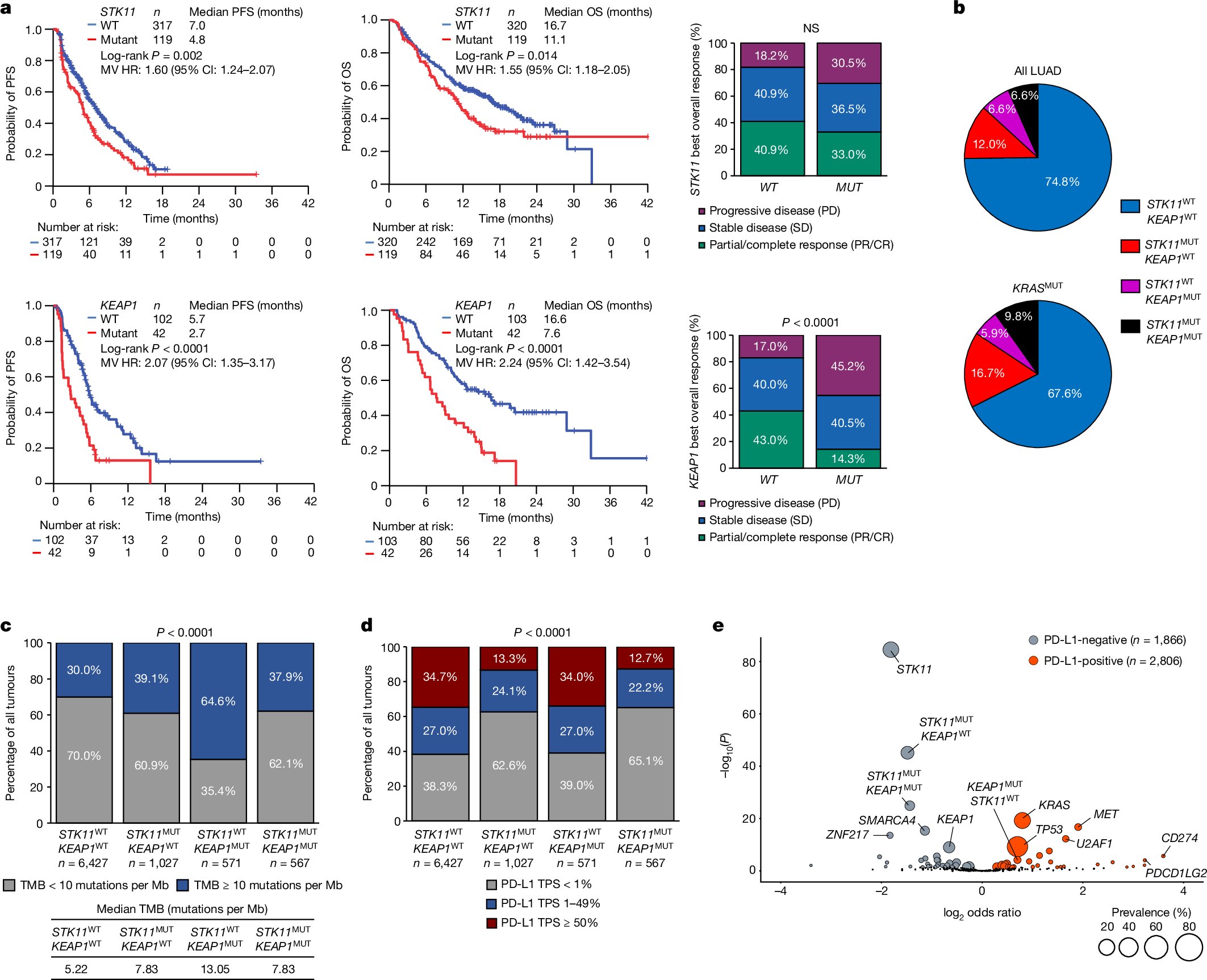 medicalxpress.com
medicalxpress.com
Researchers from The University of Texas MD Anderson Cancer Center have demonstrated that patients with metastatic non-squamous non-small cell lung cancer (NSCLC) harboring specific mutations in the STK11 and/or KEAP1 tumor suppressor genes were more likely to benefit from adding the immunotherapy tremelimumab to a combination of durvalumab plus chemotherapy to overcome treatment resistance typically seen in this patient population.
 www.theguardian.com
www.theguardian.com
Officials call death of Patrick Weier, 46, ‘Colorado tragedy’ but police say they do not know what caused his death The person killed Thursday during an elevator malfunction at a former Colorado gold mine – which left 23 stranded underground – worked as a tour guide at the site, authorities said. Weier’s death unfolded at about 12pm local time at Mollie Kathleen gold mine. The site near Cripple Creek, Colorado, which opened in the 19th century as a mine but closed in the 1960s, now offers tours. Participants take an elevator 1,000ft down the mine shaft. The trip takes approximately two minutes, with the tour lasting about an hour. “We know that at 500ft is where the issue occurred,” Mikesell told reporters. “We know that there was some type of an incident with the doors, and at that point, something went wrong. “Currently we don’t know what happened at 500ft to cause this.” Authorities said that the lift operator at the top of the shaft noticed there was a problem with the elevator when 11 people were riding it. After they were brought back to the main level, authorities realized that Weier was killed and four other adults injured, the Gazette reported. Another group of 12 – including 11 visitors and one guide – remained at the bottom after the elevator malfunctioned.
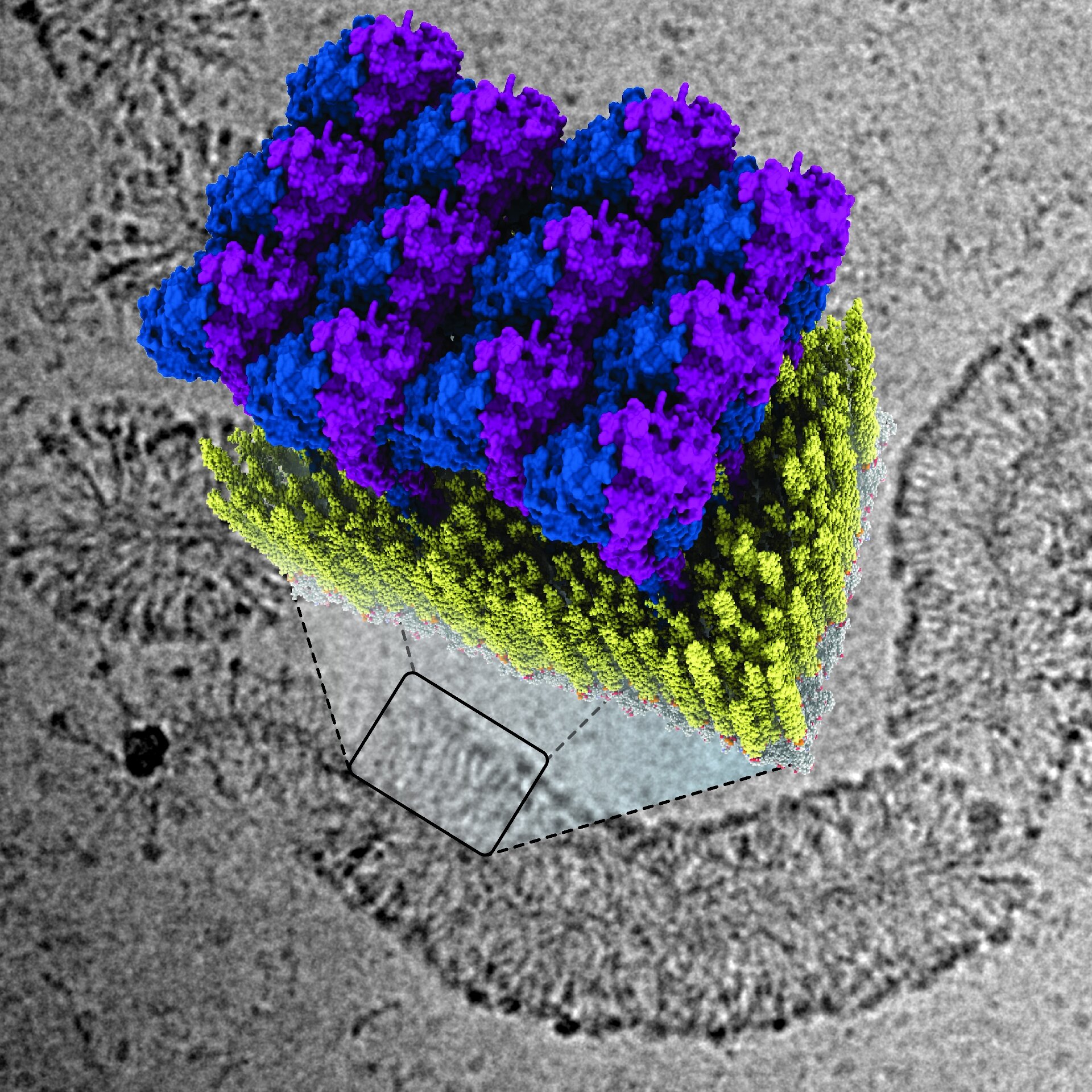 phys.org
phys.org
The protein GBP1 is a vital component of our body's natural defense against pathogens. This substance fights against bacteria and parasites by enveloping them in a protein coat, but how the substance manages to do this has remained unknown until now. Source: **Structural basis of antimicrobial membrane coat assembly by human GBP1** [https://www.nature.com/articles/s41594-024-01400-9](https://www.nature.com/articles/s41594-024-01400-9)
New insights on what stimulates long-lived antibody production could spur better vaccines Neither vaccinations nor immunity from infections seem to thwart SARS-CoV-2 for long. The frequency of new infections within a few months of a previous bout or a shot is one of COVID-19’s most vexing puzzles. Now, scientists have learned that a little-known type of immune cell in the bone marrow may play a major role in this failure. The study, which appeared last month in Nature Medicine, found that people who received repeated doses of vaccine, and in some cases also became infected with SARS-CoV-2, largely failed to make special antibody-producing cells called long-lived plasma cells (LLPCs).
 www.nature.com
www.nature.com
Atherosclerosis is an inflammatory disorder responsible for cardiovascular disease. Reactivation of efferocytosis, the phagocytic removal of cells by macrophages, has emerged as a translational target for atherosclerosis. Systemic blockade of the key ‘don’t-eat-me’ molecule, CD47, triggers the engulfment of apoptotic vascular tissue and potently reduces plaque burden. However, it also induces red blood cell clearance, leading to anemia. To overcome this, we previously developed a macrophage-specific nanotherapy loaded with a chemical inhibitor that promotes efferocytosis. Because it was found to be safe and effective in murine studies, we aimed to advance our nanoparticle into a porcine model of atherosclerosis. Here, we demonstrate that production can be scaled without impairing nanoparticle function. At an early stage of disease, we find our nanotherapy reduces apoptotic cell accumulation and inflammation in the atherosclerotic lesion. Notably, this therapy does not induce anemia, highlighting the translational potential of targeted macrophage checkpoint inhibitors.
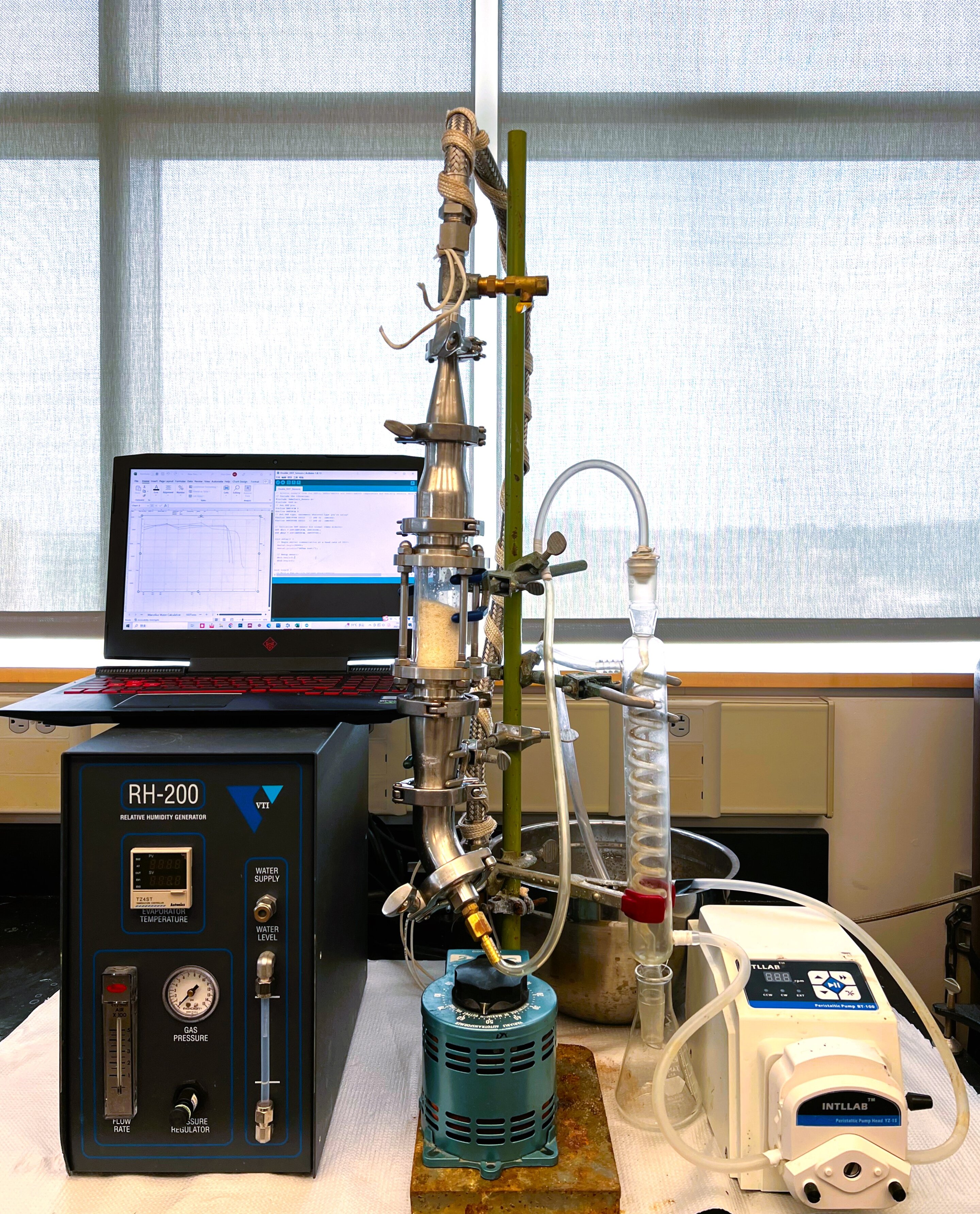 techxplore.com
techxplore.com
Seemingly miraculous innovations have made it possible to slake the ever-growing thirsts of our industrial society. Need more energy? Frack it from deep-bedded rocks. Fresh water? Desalinate ocean flows. Precious metals? Leach them from low-grade ores that were previously unminable. But these and other marvels leave us in a pickle—awash in a sea of hypersaline brine. This "brine"—wastewater containing levels of salt many times higher than seawater and often contaminated with pollutants—is a byproduct of these and other industrial processes, and it's a problem. However, a new approach developed by SenGupta and visiting researcher Hao Chen (then a doctoral student) represents a leap forward in cleaning up and even potentially unlocking valuable resources lurking in the super-salty water. **A new solution** SenGupta and Chen have developed a new process, evaporative ion exchange (EIX), to concentrate brine at room temperature using air humidity and ion exchange. Unlike existing methods, EIX avoids scaling and fouling, and it's much faster than natural evaporation due to its efficient design. It uses a polymeric ion exchange resin bead, a type of gel with a high concentration of charged functional groups, or atoms whose electrical charge binds with ions of opposite charge. When the bead comes into contact with water, the resin's internal pressure causes it to absorb water quickly while rejecting salts and other compounds.
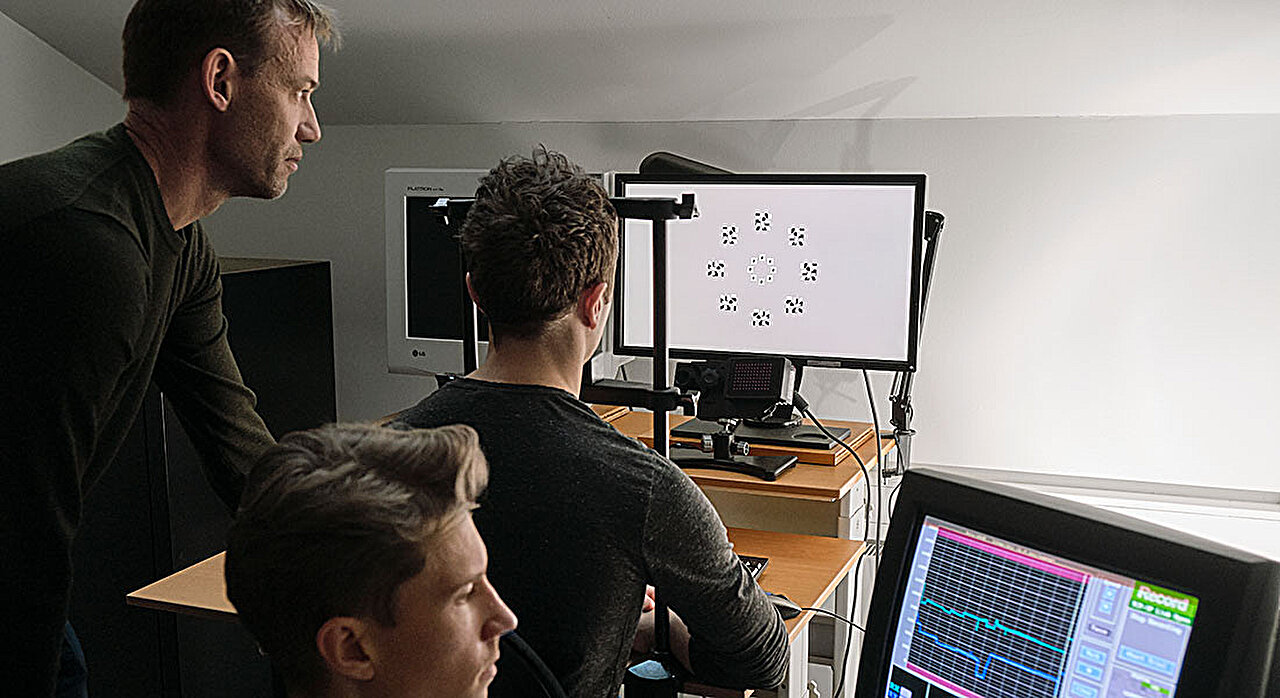 medicalxpress.com
medicalxpress.com
The mobile phone is often blamed for drowning us in information and stealing our attention. But it is rather our inner reward system that our phones and tech companies utilize, shows new research from the University of Copenhagen. We often hear that we live in an attention economy, where tech companies like Google, Apple, and Facebook present us with an overwhelming amount of irresistible information that steals our attention. This is not wrong, but our understanding of how attention works is imprecise. In a new study, researchers from the University of Copenhagen show that our attention works surprisingly well. And that it enables us to achieve exactly what our brains most desire—rewards. Source: **Testing Biased Competition Between Attention Shifts: The New Multiple Cue Paradigm** [https://psycnet.apa.org/fulltext/2024-78669-001.html](https://psycnet.apa.org/fulltext/2024-78669-001.html)
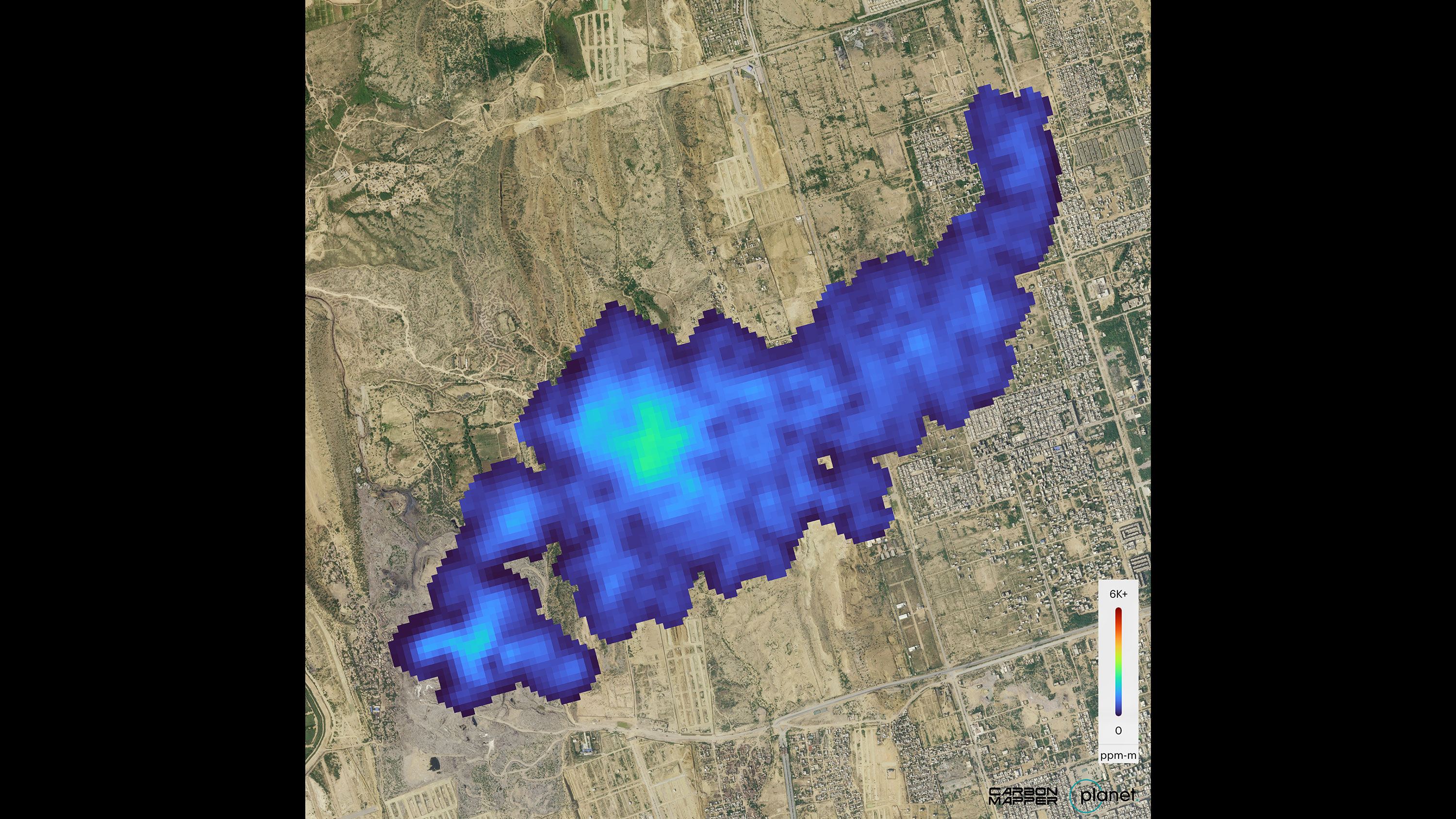 www.nasa.gov
www.nasa.gov
Using data from an instrument designed by NASA’s Jet Propulsion Laboratory in Southern California, the nonprofit Carbon Mapper has released the first methane and carbon dioxide detections from the Tanager-1 satellite. The detections highlight methane plumes in Pakistan and Texas, as well as a carbon dioxide plume in South Africa. The data contributes to Carbon Mapper’s goal to identify and measure greenhouse gas point-source emissions on a global scale and make that information accessible and actionable. The data used to produce the Pakistan image was collected over the city of Karachi on Sept. 19 and shows a roughly 2.5-mile-long (4-kilometer-long) methane plume emanating from a landfill. Carbon Mapper’s preliminary estimate of the source emissions rate is more than 2,600 pounds (1,200 kilograms) of methane released per hour. The image collected that same day over Kendal, South Africa, displays a nearly 2-mile-long (3-kilometer-long) carbon dioxide plume coming from a coal-fired power plant. Carbon Mapper’s preliminary estimate of the source emissions rate is roughly 1.3 million pounds (600,000 kilograms) of carbon dioxide per hour. The Texas image, collected on Sept. 24, reveals a methane plume to the south of the city of Midland, in the Permian Basin, one of the largest oilfields in the world. Carbon Mapper’s preliminary estimate of the source emissions rate is nearly 900 pounds (400 kilograms) of methane per hour.
 www.nature.com
www.nature.com
The Tibetan Plateau glaciers, among the world’s most remote and pristine places, provide water to millions and play a vital environmental role. We measured the lead isotopic composition in a dusty ice core from the Guliya ice cap in northwest Tibet, from approximately 36 thousand years Before Present (Stone Age) to 2015, to determine the onset and sources of anthropogenic lead. Despite the dust-laden nature of the core, a clear change in the lead isotope signature to below Stone Age levels started in 1949 followed by a rapid decrease in 1960 and an even more rapid decrease in 1974 indicating the first emergence of anthropogenic lead. Accurate isotopic lead measurements allowed us to better, and more sensitively, quantify sources using a Bayesian mixing model. Chinese gasoline was the primary anthropogenic source surpassing natural contributions in the 2000s until 2007 when emissions from leaded gasoline decreased and those from coal and lead-zinc ores increased.
 www.smithsonianmag.com
www.smithsonianmag.com
Scientists converted the patient’s own cells into blood sugar-regulating cell clusters before injecting them back into her abdomen—and one year later, she still doesn’t need insulin injections The procedure was a world first—no other type 1 diabetes patient had been treated with their own cells. Two and a half months later, the young woman started producing enough of her own insulin to not need injections of the hormone anymore. Now, more than a year has passed since the treatment, and in another world first, her ability to produce insulin has remained stable. Type 1 diabetes is an autoimmune disease in which the body attacks its own insulin-producing cells in the pancreas, which are found in clusters called islets. These cells secrete hormones to regulate blood sugar levels. This immune response results in chronic high blood sugar for diabetes patients, which can lead to other serious health conditions. China currently has the highest number of diabetes cases in the world.
 news.harvard.edu
news.harvard.edu
In preclinical studies, spray offered nearly 100% protection from respiratory infections by COVID-19, influenza, viruses, and pneumonia-causing bacteria Most viruses enter our system through the nose. When we catch an airborne infection like the flu and COVID, we breathe out tiny droplets of fluids that contain the pathogen. Healthy people around us breathe in these pathogen-containing droplets, which attach inside their nose and infect the cells that line the nasal passageways. The pathogen replicates and can be released back into the air when an individual who is sick, whether they know it or not, sneezes, coughs, laughs, sings, or even just breathes. Vaccines against these viruses can be beneficial, but they’re imperfect. Vaccinated people still get infected and spread the infection to others. Masks are also helpful but aren’t perfect, either — they can leak, and many people wear them improperly or choose not to wear them at all.
 phys.org
phys.org
These results suggest it could take decades for natural groundwater flow to flush out groundwater PFAS still present from the 'high emission years,' roughly the period between 1980 and 2019. And this could be an underestimate; the time scale could be longer if PFAS is diffusing into and out of low-permeability zones (clay layers and lenses) below the water table.
 www.nature.com
www.nature.com
The condition for crack deflection was developed by applying classic fracture mechanics to laminates with variable layer thickness and stiffness, and was used in investigating two biologically inspired laminates. We found that the cuticle-like laminate deflects cracks via a decrease in the layers modulus in the crack direction, whereas the spicule-like laminate achieves this behavior by increasing the layers thickness. A wider picture is obtained by extending the thickness and stiffness grading ranges beyond those of the biological examples. We show that the grading approach can be used in synthetic laminate design to reach higher resilience (in a critically vulnerable direction) than that of a uniform laminate, without adding reinforcing material, or, alternatively, to retain the desired resilience but with significantly less material. Both grading types enhance the structural sustainability by reducing material waste and structural weight, and may potentially achieve better durability and material efficiency.
 theconversation.com
theconversation.com
In 1864, for example, Alfred’s younger brother Emil was killed in a nitroglycerin explosion at the family laboratory near Stockholm – after which the manufacture of nitroglycerin was banned in the city. But this family tragedy didn’t distract Alfred from his goal. He continued to manufacture explosives – now at an industrial scale – at a factory in Vinterviken, Sweden. That factory was destroyed several times in accidents caused by the instability of nitroglycerin – killing numerous workers. Although Nobel’s factory was undoubtedly a dangerous place to work, it also helped uncover the benefits of nitroglycerin as a cardiac drug. Factory workers experienced changes to their health from exposure to nitroglycerin. The chemical has substantial physiological effects as a vasodilator that relaxes blood vessels to increase blood flow and oxygen to the heart.
Silicosis is nothing new—in fact, it’s been around since ancient times. The occupational illness, which has long afflicted quarrymen and miners, is contracted through the cutting or grinding of stone, which releases microscopic particles of crystalline silica dust into the air. When inhaled, prolonged exposure to this type of silica can cause damage to the lungs, including inflammation, permanent scarring and eventual respiratory failure. For centuries, it was a disease relegated to workers in their old age who had accumulated a lifetime of exposure. That’s changed since artificial stone hit the market in the 1990s.
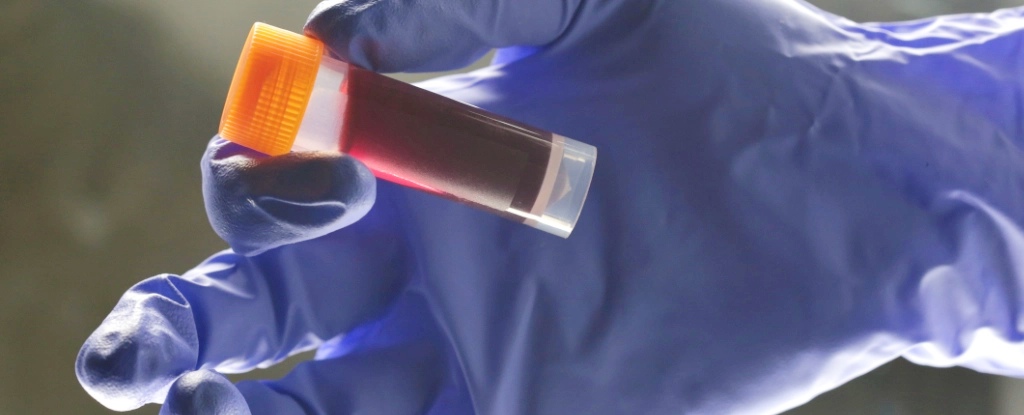 www.sciencealert.com
www.sciencealert.com
People with one of the type A blood groups are more likely to have a stroke before the age of 60 compared with people with other blood types, research shows. Blood types describe the rich variety of chemicals displayed on the surface of our red blood cells. Among the most familiar are those named A and B, which can be present together as AB, individually as A or B, or not present at all, as O.
 medicalxpress.com
medicalxpress.com
Extreme rainfall events are associated with an increased risk of death from all causes as well as from heart and lung diseases, finds an analysis of data from 34 countries and regions. Overall, across all locations, a day of extreme rainfall with a five year return period was associated with an 8% increase in all-cause deaths, a 5% increase in cardiovascular deaths, and a 29% increase in respiratory deaths over a 14-day period after the rainfall event. Extreme rainfall events with a two year return period were associated with respiratory deaths only, whereas rainfall events with a one year return period showed no effect on either cardiovascular or respiratory deaths. Locations with lower variability of rainfall or scarce vegetation coverage showed higher risks of deaths after extreme rainfall events. Further analysis showed protective effects of moderate to high rainfall, possibly due to reduced air pollution and people staying indoors. But risk of harm increased at extreme rainfall levels, likely due to damage to infrastructure, water contamination, and exposure to harmful microorganisms.
A disturbing detail has been discovered in those most at-risk when in comes to what is being labelled the “new asbestos” that is plaguing the construction and mining industries. Lung Foundation Australia is exposing the risk of silicosis, which impacts more than 600,000 Aussies in the construction, mining, manufacturing and tunnelling industries. Silicosis is caused by items with a high silica content such as engineered stone — which has been linked to the incurable illness since 2015. Engineered stone is a common item used in kitchen benchtops but is banned in Australia. Workers need to be in full protective gear to cut the engineered stone while it’s wet for it to be considered “safe”. However, a survey of more than 500 people in the most vulnerable industries revealed that only 36 per cent knew what symptoms to look out for. Symptoms include a persistent cough, shortness of breath and difficulty breathing, which can appear from a few weeks to many years after exposure to silica dust. A whopping 78 per cent are aware of silica dust and the risk of silicosis but only 23 per cent are worried about developing the lung condition. Only eight per cent have discussed it with a health professional and just 34 per cent understand it’s incurable.
 www.ncbi.nlm.nih.gov
www.ncbi.nlm.nih.gov
**Purpose of review** *There is a well established association between silica inhalational exposure and autoimmune disease, particularly in the context of intense exposure. We will provide in this article an update overview of new sources of silica dust exposure, with evidences of mechanisms from human and animal studies for association between silica and autoimmune diseases, their early detection of silicosis and new options for treatment.* The association between silica exposure and autoimmune disease was first described by Bramwell in 1914, who observed scleroderma among stone masons . Fifty years later, Erasmus found an increased incidence of systemic sclerosis (SSc) among South African gold miners, later referred to as Erasmus syndrome . In 1952, Caplan described the occurrence of multiple lung nodules in coal miners who suffered from rheumatoid arthritis (RA), comorbidity known as Caplan's syndrome or rheumatoid pneumoconiosis. Significant risk of developing SSc, RA, systemic lupus erythematosus (SLE), dermatomyositis/polymyositis and antineutrophil cytoplasmic antibody-positive vasculitis has been linked to silica exposure and a study demonstrates that male patients with SSc have a high prevalence of occupational exposure to silica or solvents.
 medicalxpress.com
medicalxpress.com
The eight-year study, published in Nature Medicine, outlines how cancer immunotherapy induces tumor recognition through neoantigens to reshape the tumor ecosystem. Neoantigens are small peptides produced when cancer cells mutate and are a primary marker for the immune system to recognize cancer cells as different from self. Neoantigens are thought to be the primary way that the immune system recognizes tumors, but neoantigen prediction tools lack accuracy due to a lack of existing data in this space. To overcome this issue, the team developed the largest neoantigen screen to date, where they validated their predictions and monitored the dynamic response to neoantigens with longitudinal blood draws. Within three weeks of treatment, people who went on to respond well to nivolumab had a sharp decline in clonal neoantigens. Meanwhile, individuals whose cancer did not go into remission still mounted an immunologic response, but to smaller sub-clonal populations. This is important because many believed that non-responders were unable to activate and recognize the tumor, but here they show it may be that the immune system is mounting a response to neoantigens but that this is insufficient to destroy all tumor clones.